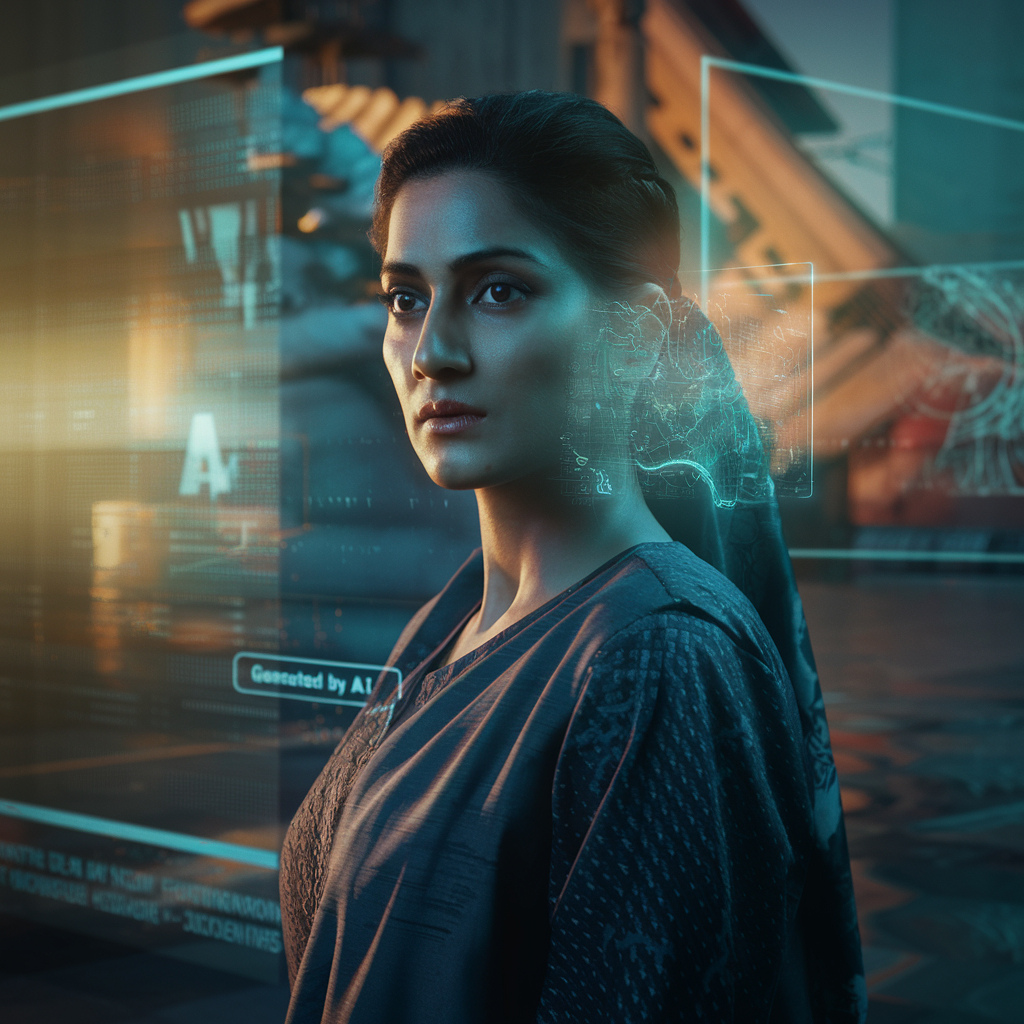Artificial intelligence (AI) has become much more than a technology buzzword it’s rapidly transforming how we live, work, and interact with the world. Among its most fascinating applications is the creation of AI-generated imagery, a powerful yet controversial tool capable of reshaping how we view public figures. One recent topic sparking conversation is the creation of “Maryam Nawaz AI pictures,” where advanced AI tools are used to manipulate or generate images of the prominent Pakistani political figure.
These AI-generated visuals ranging from creative digital portraits to potentially misleading deepfakes have implications that extend far beyond art and entertainment. They influence political discourse, raise ethical questions, and spark debates about the misuse of such technology.
This blog will explore AI-generated images, their applications to public figures like Maryam Nawaz, and their broader social and ethical impacts. By the end, you’ll have a clear understanding of both the creative potentials and the challenges posed by this advancing technology.
What Are AI-Generated Images?
AI-generated images are visuals created or enhanced by machine learning algorithms, often leveraging techniques like Generative Adversarial Networks (GANs) or diffusion models. These tools learn from vast datasets of images to craft new visuals that mimic or blend features, styles, and even emotions.
When it comes to public figures like Maryam Nawaz, AI-generated imagery can serve several purposes, such as:
- Artistic Expression: Creating stylized and imaginative portrayals as a form of art or commentary.
- Satire or Parody: Developing humorous content for political or social critique.
- Misinformation: Producing manipulated deepfakes to mislead or tarnish reputations.
This technology has enabled both incredible creativity and troubling ethical challenges.
Maryam Nawaz and AI-Generated Imagery
Maryam Nawaz, a prominent figure in Pakistani politics and Vice President of the Pakistan Muslim League (Nawaz), remains in the public eye as a trailblazer and influencer. Unsurprisingly, her likeness is often used in AI-generated content. But what are the implications of such portrayals?
1. Digital Creativity at Its Peak
AI tools allow artists and designers to rethink how we depict public figures. For Maryam Nawaz, this might mean creating stunning digital portraits that highlight her role in Pakistani politics or using abstract art styles to convey deeper narratives.
Through platforms like MidJourney and DeepArt, these creations can blend cultural imagery, historical visual cues, and futuristic designs to ignite conversations on artistic freedom and political identity.
2. Ethics and the Risks of Misinformation
While AI-driven creativity fosters innovation, it also carries significant ethical baggage. Fake images that depict false scenarios or statements made by political leaders pose a real risk to public discourse.
Consider a deepfake of Maryam Nawaz delivering a fabricated speech. Though it might look authentic, such manipulated media could easily mislead the public, deepen polarization, or affect upcoming elections. The rise of these scenarios has led to debates about how to label or monitor AI-generated imagery to prevent harm.
3. Public Influence and Perception
AI-generated visuals shape how society perceives leaders. When AI is used to create images of Maryam Nawaz that portray her in various narratives, it may reinforce or contradict her actual political persona.
While idealized or creative portrayals might inspire public admiration, negative manipulations could build distrust. The stakes are even higher in today’s age of rapid media consumption, where viral content dominates.
How Are AI-Generated Images Created?
Creating an AI-generated image of a political figure like Maryam Nawaz is a multi-step process that combines technical expertise with creative finesse. Here’s how it typically works:
1. Data Collection
AI models require extensive datasets to learn and create. For public figures like Maryam Nawaz, these datasets might include publicly available photographs, videos, or media appearances.
2. Training the Model
Through machine learning, AI systems identify patterns, such as facial features, expressions, and how light interacts with the subject. This phase relies heavily on complex algorithms like GANs to mimic reality.
3. Image Synthesis
Here, the AI creates a new image or modifies an existing one based on the learned patterns. Artists often refine these outputs to meet their creative vision.
4. Post-Production
The finished piece may undergo color grading, sharpening, or additional styling to create polished, high-quality imagery.
While these steps highlight the technology’s potential, they also demonstrate its complexity and the risks posed by misuse.
Ethical Implications and Responsible AI Use
The dual-edged nature of AI-generated imagery makes it essential to use these tools responsibly, particularly for public figures. Here are some guiding principles for ethical practices in this space:
Transparency
AI-generated images should be clearly labeled to indicate their origin. For example, a digital portrait of Maryam Nawaz could explicitly note, “Created using AI tools.”
Respect for Privacy
Even public figures like Maryam Nawaz have rights to privacy. Avoid generating or sharing images that compromise dignity or sovereignty.
Fighting Misinformation
Public education is vital to help people identify deepfakes and understand the motivations behind them. Institutions should also advocate for stricter content verification mechanisms.
Accountability
Laws and regulations should clarify the responsibility of creators, platforms, and distributors in the event of harm caused by AI-generated imagery.
The Broader Impact of AI on Visual Media
From social media campaigns to political advertisements, AI-generated visuals are rapidly evolving. The creative potential these tools unlock is astounding, yet the rise of misinformation and manipulation signals that vigilance is equally important.
To mitigate harm, collaborations between policymakers, technologists, and artists must address ethical concerns while championing innovation. As the debate around AI use in politics continues, public awareness, transparency, and responsible innovation will remain critical.
FAQs
1. What is a “Maryam Nawaz AI picture”?
A “Maryam Nawaz AI picture” refers to any image of Maryam Nawaz that has been created, enhanced, or modified using AI tools. These images may be artistic or manipulated for specific purposes.
2. What risks do deepfakes pose to public figures?
Deepfakes can spread misinformation, potentially damaging reputations, influencing public opinion, or even impacting elections.
3. How can I identify AI-generated images?
Look for inconsistencies, such as unnatural shadows, mismatched facial features, or image distortions. Many tools are also emerging to help verify image authenticity.
4. Are there laws regulating AI-generated images?
Policies regulating AI use in visual media vary by region. Many countries are beginning to introduce laws to combat misinformation and protect digital rights.
5. How can we use AI responsibly for political figures?
Responsible AI use includes clearly labeling generated imagery, avoiding defamation or misuse, and using these tools to enhance rather than harm public discourse.
Reframing the Future of AI in Media
AI-generated imagery, such as “Maryam Nawaz AI pictures,” demonstrates how far technology has advanced while also highlighting the challenges we face in balancing creativity with accountability.
This technology has immense potential to transform art and media, but it also demands careful handling to prevent misuse. By emphasizing education, transparency, and ethical practices, we can harness AI’s strengths while minimizing its risks.
AI is shaping our views of the world and figures like Maryam Nawaz one image at a time. The responsibility lies with all of us to ensure it’s shaping a truthful, inclusive, and inspiring future.



